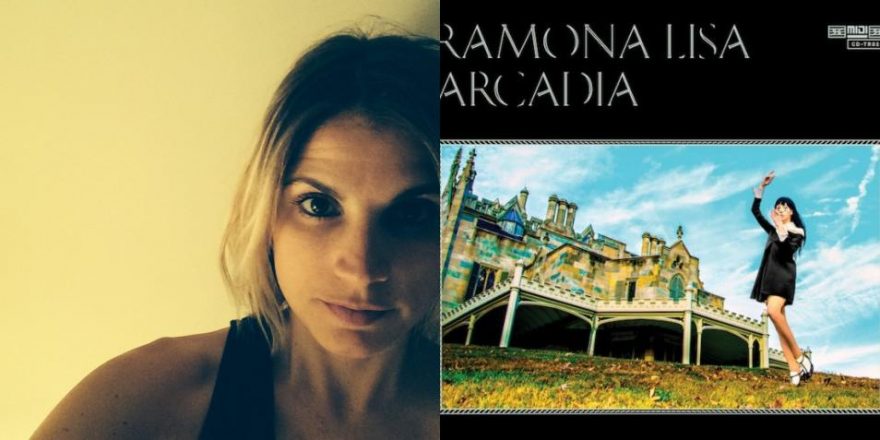In 1979, two years into Jimmy Carter’s presidency, a story of his interaction with a swamp rabbit (later termed the “Bonsai Bunny”) surfaced. Despite all of the events that took place during Mr. Carter’s presidency (including the Iran hostage crisis and peace negotiations between Egypt and Israel), the bunny incident managed to stamp his legacy. It made him seem weak and unstable. The Reagan campaign learned a quick lesson from Carter’s poor publicity and came to understand that an image, a brand, can be more powerful than what is actually said. Born was the image-driven platform that still informs politicians’ campaigns to this day.
Why wouldn’t the arts follow suit? Today, image is everything. There are too many acts for it not to be. The biggest bands are the strongest brands. The artist can now dictate what their music is supposed to say through whatever image they please. The public can be told what to think by the artist. (St. Vincent was recently interviewed by Stephen Colbert and she spoke of the digital realm being an opportunity to create ideal versions of ourselves.) I am not opposed to this, nor do I think it doesn’t work to the artist’s benefit. You can ultimately be in control if you possess the gift of foresight, anticipate trends and have a clear vision. Caroline Polachek has that gift.
When the first news of Polachek’s side project Ramona Lisa broke, the public was presented with the background story— the new record was Arcadia: recorded in Rome, 100% MIDI, a purely solo endeavor with Ms. Polachek and her pastoral laptop pop. The images to accompany were of her slender frame dancing in a black dress, in front of a mosaic castle, blue sky. Horses. Two eyes painted on her cheeks, long white nails. A Neon-mystic, I understood some message of mythology.
I sit here now, upon third or so listen, and I quickly realize two things:
1. This sounds exactly like what I’ve been told — picture painted perfectly.
2. It doesn’t matter.
The most incredible (and enjoyable) thing about this record is that I can imagine all the mythological imagery without the side-notes, without pictures as references. I almost wish that I hadn’t read or seen any of it. Building tiny fantasies is a great accomplishment in storytelling. What a greater feat it is to do it through song. Sure, we all have specific experiences with our favorite records and they take us back to the places that we want to revisit or blind us with reminders of times we wish to forget. It’s rare, however, to listen to a record that has mood and experience built in. Although it’s interesting to hear a musician’s story and their process of creating a record, I’d much rather know nothing and implant my own tales and develop a personal relationship with the music.
I only say that because I really adore this album. The way I did with records when I was young — when I had the desire to create my own fables, my own landscapes, my own idea of where things like the drifting bells that open Arcadia come from. The way I have a cherished relationship with Selected Ambient Works 85-92 or my mother’s Joni Mitchell albums. Part of this quality may come from the fact that Arcadia feels incredibly intimate — Ms. Polachek has managed to capture the freeness one allows oneself to experience only when recording demos, that mood of experimentation, while all at the same time producing something completely refined.
From song to song, Arcadia is a journey. Not one song is the same, traveling from baroque-tinged instrumentals to whimsical pop gems (“Dominic”) to quiet and gentle ambient/abstract/subtractive moments (“Hissing Pipes at Dawn (They’re Playing Our Song”)). “Lady’s Got Gills” is a straight-up dance track, but it travels as well — ending in a sound-bath of flowing water, swaying MIDI oboe, jungle birds, distortion. “Wings of the Parapets” hints at an admiration for early music, (a modern take on the madrigal?) with gliding melodies showcasing the highest range of Polachek’s voice. Even within songs there is travel, wanderlust. “Izzit True What They Tell Me” begins as a pattering pop piece reminiscent of The Sensual World-era Kate Bush. Polachek then modulates and pulls her voice to interact with the instruments, moving into a darker place, rhythms and motifs gliding in and out of space, narrative intensifying, to arrive at one of my favorite moments on the record: Over a moodier synth palette, the original hook returns, placed on top of new chordal movement. The lyrics are poetic, imaginative, and at times gothic. They hint at love lost, love newly explored, jealousy, adventure.
On top of all this diverse musical tapestry, there’s the central and most powerful force of it all: Polachek’s voice. Flexible, sensual, cast to a wide range of characters, it is an instrument capable of evoking ultimate beauty. I think everyone who knows Polachek is aware of the fact that she is a good singer, but it’s deeper than that. She uses her voice the way one should when they have such a powerful machine. Playfully bouncing around her vast range, melodies come with ease, each moment of inflection and change intentional.
Arcadia asks something of the listener too. Ms. Polachek’s intelligence as a musician challenges the listener to be patient, to wait for the moments of rest. The sonic complexity takes you deep inside, each idea having to something to say. Many voices to digest, it takes thought and calm to wait for the arrival of space. Then, the rest comes. And when it does, it satisfies deeply. “I Love Our World” is a wonderful example, its twists and hisses spin around until they land on echoing percussion, a moment that recalls Maya Deren’s 1943 short film “Meshes of the Afternoon,” and its score by Teijo Ito. Waiting for the final echo clack. Peaceful, intense. More rest comes. Intense, then peaceful, open.
A final note: image is still everything. Because of this, I’m happy that Ms. Polachek has a knack for drawing a concise picture of herself, of translating her music into the visual. It will draw a larger audience and more people will hear Arcadia. Whatever works. I just hope it does, because this record deserves attention.









